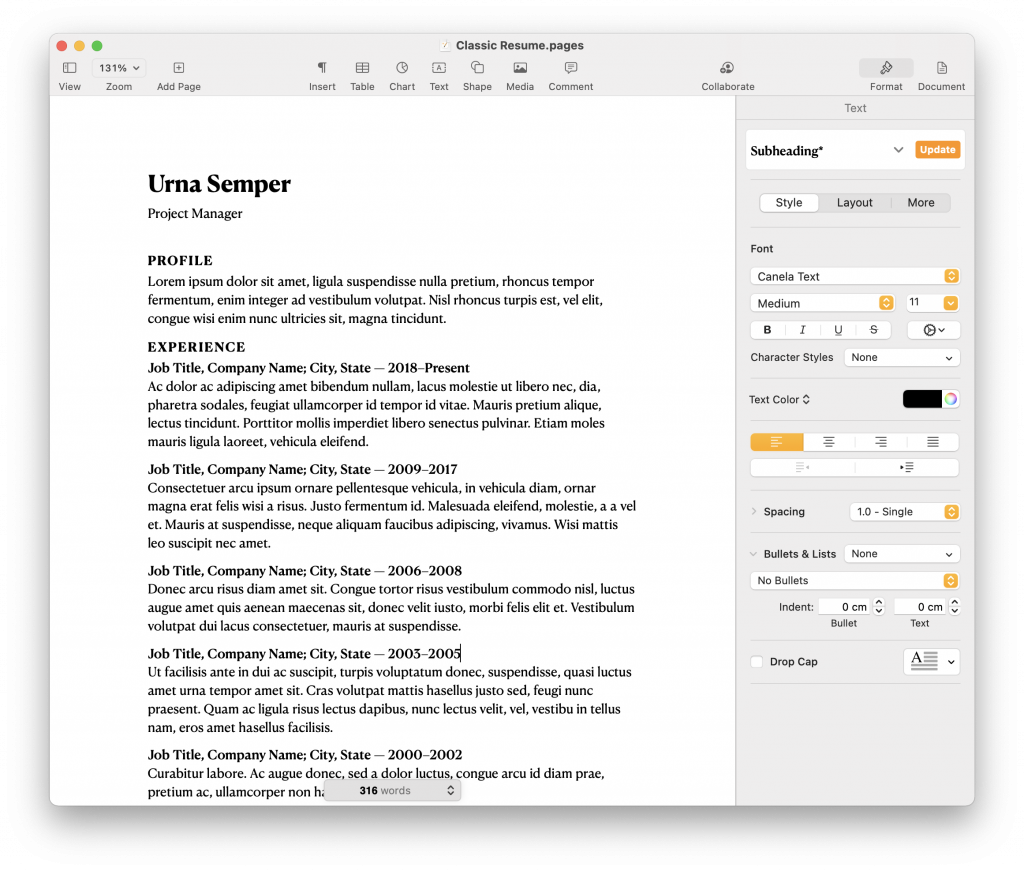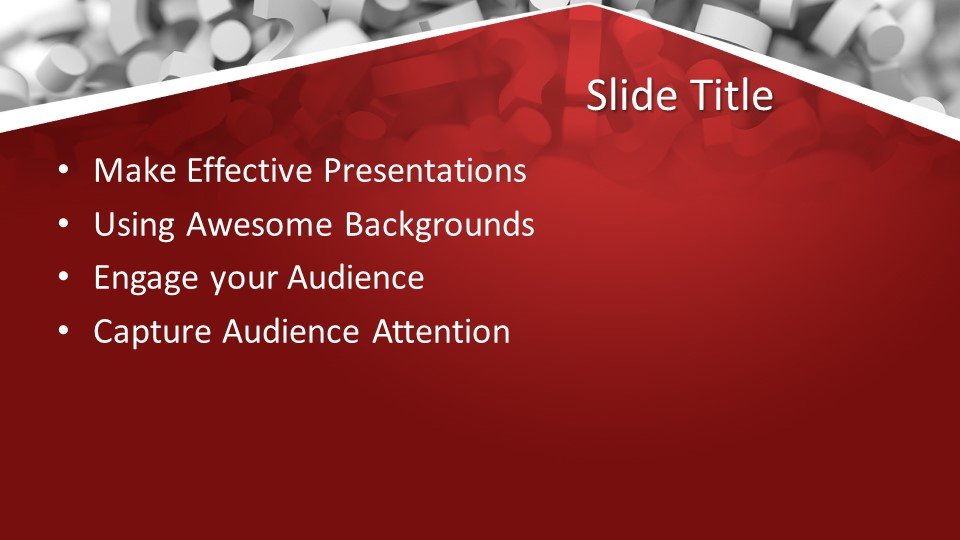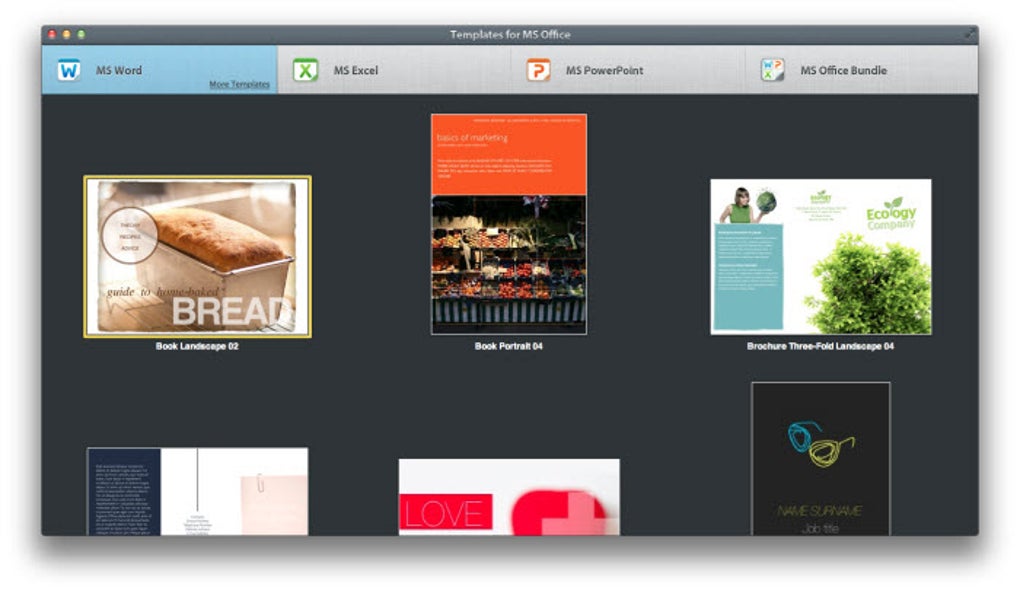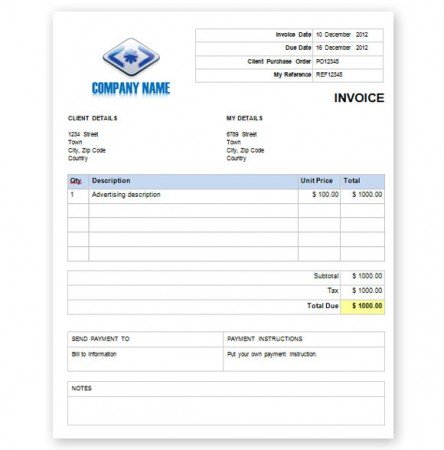- Free Downloadable Office Templates
- Powerpoint Templates For Mac Free
- Free Office Templates For Mac
- Free Templates For Mac Pages
- Free Office Templates For Mac Download
- Free Office Templates For Mac Free
- Microsoft Office Templates For Mac
This step-by-step Pages timeline tutorial explains how to make professional timelines using the popular word processor for Mac.
Although primarily designed for processing text, Pages allows Mac users to also create basic timelines starting from a 2D Bubble Chart. However, the resulting visuals require manual formatting, which can prove time-consuming if you need to build more detailed plans or update them regularly.
- Browse to the Custom Office Templates folder that’s under My Documents. Click your template, and click Open. Make the changes you want, then save and close the template. Use your template to make a new document. To start a new file based on your template, click File New Custom, and click your template.
- WPS Office Suite for Mac FREE. WPS Office Suite for Mac. Free Editor for all-in-one Office Suite: Word, PDF, Excel, PowerPoint with wonderful editing experience. Make your data processing more handy. Flexible processing of tables, charts, data analysis, and processing. Support analysis and modeling capabilities.
- PowerPoint for the web. Turn your ideas into compelling presentations using professional-looking templates. Use animations, transitions, photos, and videos to tell one-of-a-kind stories. Co-author team presentations at the same time, from anywhere. Start using PowerPoint for free.
- According to this page, and confirmed by experiment, the path has changed for Office 2016.It is now /Library/Group Containers/UBF8T346G9.Office/User Content/Templates. (This is what you see in the Finder: if you use Terminal the last two directories have '.localized' appended to their name, which Finder evidently suppresses).
Those who need to produce professional-looking visuals faster can try an online timeline maker such as Office Timeline's to simplify their work. Accessible from any browser, the tool enables you to quickly generate, edit and download your graphic as a native PowerPoint slide, which makes it easy to share and include in presentations. This tutorial shows how to create a timeline both manually in Pages and automatically with Office Timeline Online. If you wish learn how to make a Gantt chart in Pages for Mac, please see our Gantt tutorial here.
Search thousands of customizable Microsoft templates to jump start your work, school, and family projects. Microsoft offers a vast selection of free or premium Office templates for everyday use. Create a custom photo card, pitch your million-dollar idea, or plan your next family vacation with Microsoft Office templates.
Which tutorial would you like to see?
How to manually make a timeline in Pages
1. Add a 2D Bubble Chart to your Pages document
Open Pages and select Blank Landscape from the template gallery to ensure you'll have enough room for your Gantt chart.
Go to Insert → Chart and select 2D Bubble from the menu that pops up. Pages will automatically generate a bubble chart that looks like the one in the image below:
2. Add your project data to the bubble chart
Click on the chart area and then on the Edit Chart Data button that appears.
In the Chart Data table that pops up, add your project data as follows:
i.List your project’s key events (milestones) in the first row, the one populated by default with the month name. Keep the milestone descriptions as short as possible as these will be later displayed on the graphic and you want them to be fully visible.
ii.Use the X column to enter the due dates for each milestone, as shown in the image below.
iii.In the Y column of each milestone, on the same row of the milestone's due date, add a digit such as 1, 2, 3, or 4. These numbers will act as plotting elements that set the milestone bubbles' vertical positioning on the chart. Bubbles that have smaller plotting numbers will be shown closer to the X axis, while those with bigger digits will be placed higher up on the chart.
iv.Lastly, in each milestone's Size column, enter a number like 10, 20, 30 to set the size of the corresponding bubble on the timeline. In my case, I used the value 20 for all my milestones.
After adding all the project data, the resulting chart looks will look this:
3. Format the graphic to optimize relevance and include key details
As you may have noticed, Pages has automatically added hours to the time series on the timeline’s horizontal axis. If you want to remove the hours for a cleaner look, select the chart area and then go to Axis → Value (X) in the Format pane on the right. Here, choose None from the Time dropdown menu under Value Labels.
Although the legend situated above the graphic gives information about the chart milestones, it may be hard to follow for the viewer. A more efficient way to communicate your milestones' details is to have them displayed directly on their corresponding bubbles. If you want to go with this suggestion, then you need to:
i.Remove the legend: Go to the Chart tab and unselect the box for Legend under Chart Options.
ii.Add bubble labels displaying the milestones’ descriptions and due dates: From the Series tab, tick the boxes for Show Series Name and Values, making sure to select X from the dropdown menu, as shown in the picture below:
Android emulator for mac download. Within the same tab, you can change the labels' position using the Location feature, or their date & time format from the Value Data Format section. In my example, I kept the centered placement of the label, but selected None from the Time dropdown menu.
Next, you will need to make the label text more visible by adjusting its size and color. Select all the milestone labels (Shift + Click) and use the Font options within the Bubble Labels tab on the right. I chose to change the font from Regular Helvetica Neue to Bold Helvetica and decrease it from 12 to 10 points.
Seeing that the numerical values from the vertical axis overlap some of the milestone titles and don’t add much to the overall meaning of the chart, I decided to remove them. To do the same, go to Axis → Value (Y) and select None from the dropdown menu under Value Labels.
You may also want to remove the horizontal lines from the graphic as they aren't really relevant to the timeline. To do this, from the Value (Y) tab, go to Major Gridlines and select None from the dropdown menu.
Adding vertical lines to the chart will help you highlight the relative distance between milestones. This is done from the Value (X) tab and requires you to:
i.Choose the type of gridlines you prefer from the dropdown menus under the Major and Minor Gridlines sections. I opted for straight gray lines of 0.5 points for both of them.
ii.Insert more intermediary vertical lines from the Axis Scale section, increasing the number of Minor Steps.
Given that the uppermost milestone of my timeline was not fully included in my gridline area, I corrected that by returning to the Value (Y) tab and setting the Max Scale value under Axis Scale to 5.
Once all the steps above have been carried out, the resulting timeline looks like the one below:
4. Customize your Pages timeline
At this point, your timeline could use a few customizations to look more unique. Here are a few suggestions:
Change the default colors of the chart bubbles - select the milestone you want to recolor, go to the Style tab and use the color indicator next to Fill. Here is how I set the chromatics for my graphic.
Add effects - from the same Style section, you can choose to apply a series of effects such as shadows and strokes. Make sure to select all the chart bubbles (Shift + Click) before making the styling change. Since I didn’t want to burden my graphic too much, I only added a simple black outline using the Stroke feature.
Add a title to your timeline - select the chart area, go to the Chart tab and tick the box for Title under Chart Options. If you want to change the font, size, alignment and color of the title text, double-click on it and use the options from the small pane on the right.
After following the steps above and adjusting sizes a bit more, my final timeline in Pages looks like this:
Download timeline template for Pages
How to make a timeline online automatically
Professionals can illustrate simple plans with timelines built in Pages, but they may encounter limitations in terms of customization and flexibility when dealing with more complex project data.
Creating professional visuals that can be easily updated becomes easier with Office Timeline Online . Allowing you to automatically generate an eye-catching graphic from any browser, the tool also offers a variety of features to help you quickly customize and update your timelines, which can then be downloaded and shared as a .pptx file or .png image. To get started, access the free online timeline maker here and follow the steps below.
1. Add your project's data in Office Timeline Online
Select Timeline from scratch from the New tab in the web app to start building your timeline. You also have the option to choose one of the pre-designed templates provided or to import a schedule from an existing Excel file. In my example, I chose to make a new timeline from scratch.
After selecting Timeline from scratch, you'll be taken to the tool's Data View, where you can enter and edit your project's details.
Enter your milestones and their due dates in the Data View section to generate your timeline in real time, the live preview of which can be seen on the right. Using the Data tab, you can also make a few preliminary styling choices, such as selecting the shape and color for each milestone. Once done, you can access your graphic in full size and personalize it further by clicking either on the preview image to the right or on the Timeline tab on the ribbon.

2. Quickly customize and update your timeline
Free Downloadable Office Templates
Now that your timeline has been created, you can easily customize and update it as often as necessary. Use the Timeline View to quickly set different colors, shapes, and sizes for your milestones, move them above or below the timeband, or add extras such as Time Elapsed and Today Marker. As you can see in the image below, my final timeline includes milestones and texts of different colors and sizes, which helps me draw attention to key details of my plan.
If you have a free Office Timeline Online account, you can automatically save your timelines in the cloud, access them at any time, and instantly update them when necessary. Add and edit data in the Data tab or adjust due dates directly on the timeline, simply by dragging your milestones left or right. Once ready, your timeline can be downloaded as an editable PowerPoint slide that you can share with colleagues or present in meetings.
See how easy it is to make timelines with Office Timeline Online
Most users looking for a Mac office suite will probably have one option in mind—Microsoft Office. It’s still one of the best office suites out there, regardless of the platform, but there are other options available that you might not have considered (or even be aware of) for macOS.

Choosing the best office suite for Mac will depend on your budget, but there are plenty of free office suites for Mac that you can install without cost. To help you, here’s a look at eight of the best free Mac office suites available to install or use today.
Also, feel free to check out our YouTube channel from our sister site that goes through all the office suite options mentioned below in a quick video.
Apple iWork
After Microsoft Office, the next and best office suite for Mac users to immediately start using is the Apple iWork suite. Originally a paid-for product, the three Apple iWork office apps have been freely available for Mac devices since 2013.
Powerpoint Templates For Mac Free
Pages is a Word processor, with ready-made templates for common documents like letters available, as well as the ability to insert tables, charts, images, and other objects. Apple also has a basic spreadsheet app called Numbers that supports multiple sheets and, like Pages, comes with pre-made templates.
Finally, Keynote works as a PowerPoint replacement, with similar features like transitions and animations included. You can download all three iWork apps from the App Store.
Google Docs (Docs/Sheets/Slides)
While iCloud offers iWork apps online, it isn’t the best office suite for Mac. If you want Microsoft Office features online without paying for Office 365, then you’ll need to give try the Google Docs suite.
Freely available for Google account users, the Google Docs suite comes in a package of three (four if you count Google Forms, too). Docs is a word processor, Sheets is a spreadsheet tool, while Slides is a presentation tool to rival PowerPoint and Apple Keynote.
Google Docs is well-equipped with many of the features you’d expect to see in a fully-fledged Office alternative, along with extensive collaboration features that allow you to share and edit documents in real-time with others.
LibreOffice
Few open-source projects have the size and polish to compete against the billion-dollar Microsoft Office suite like LibreOffice. Thanks to a community of volunteers helping to build it, LibreOffice has grown into one of the best office suites available for Mac.
This fork of the once-popular OpenOffice has products to match the typical Microsoft Office collection, with a word processor, spreadsheet tool, presentation designer, and database manager. It also takes things two steps further, with a vector graphics design tool and formulae designer for mathematicians.

Best of all, LibreOffice supports Office file formats such as DOC and DOCX perfectly. LibreOffice is a fully-fledged replacement with many similar features compared to Microsoft Office, plus a few extras to sink your teeth into.
FreeOffice
As the name suggests, FreeOffice is a free Office suite available for Mac, Linux, and Windows users. Like other free Office alternatives, it focuses on the big three Office products, with Excel (PlanMaker), PowerPoint (Presentations) and Word (TextMaker) style products.
If you want an Office-like experience, FreeOffice gives it. It looks a lot like its Microsoft counterpart, with a ribbon bar interface, basic features, and support for common Office file formats like DOCX.
Some features, such as mail merge and high-quality spell checking, require a paid-for upgrade to the SoftMaker Office suite. If that’s a deal-breaker, look elsewhere.
Calligra
Another free and open-source Office replacement is the KDE-created Calligra suite. Originally designed for Linux users, Calligra is a cross-platform office suite for macOS, Linux, and Windows PCs. To install it on Mac, you’ll need the Homebrew package manager installed first.
There are no less than ten Calligra apps for you to try, from a standard word processor (Words) and spreadsheet tool (Sheets) to more specialist apps, including a mind mapping tool (Braindump).
We won’t pretend that Calligra is the most polished Mac office suite—it isn’t. What it is, however, is functional, well-rounded and free, with more built-in tools than some of its more appealing (and costly) competitors.
Apache OpenOffice
Apache OpenOffice is the spiritual successor to the previously popular (but now discontinued) OpenOffice.org suite. It shares a common code base to LibreOffice, with similar features, although some important differences exist between them.
Unfortunately, the biggest difference is active development. LibreOffice has a vibrant community behind it, while things are a little slower for Apache OpenOffice, with releases happening roughly once-a-year. In recent years, those have largely focused on bug fixes, rather than significant new features or upgrades.
There are better Mac office suites out there, but if you want a solid, old-school experience on Mac, Apache OpenOffice could be the option for you.
Free Office Templates For Mac
WPS Office Free
Free Templates For Mac Pages
As a free version of the paid-for WPS Office, WPS Office Free acts as a freemium, ad-supported taster for Mac users. That isn’t a criticism—WPS Office Free is still a good Mac office suite in its own right.
WPS Office looks like it was built with Mac in mind with an appealing and modern interface that blows some of its older competitors like LibreOffice out of the water. Like iWork and FreeOffice, WPS Office Free targets the Microsoft Office market with presentation, word processing, and spreadsheet creation tools.
It supports Office file formats, as well as support for PDF editing and creation. You can download WPS Office Free from the App Store or from the WPS Office website.
Dropbox Paper

Dropbox Paper is a quick document collaboration and editing tool built-in to the Dropbox cloud storage interface. It’s also the only app on this list that isn’t a full-fledged Office replacement, but Dropbox Paper is still a worthy and honourable mention.
Free Office Templates For Mac Download
You can use Paper to build more unusual types of documents for project planning, note taking, portfolio building, and more. Like Google Docs, you can also collaborate in real-time with other Dropbox Paper users.
It might not be the Word replacement you’re after, but if you have a Dropbox account already, give it a try.
Free Office Templates For Mac Free
Choosing The Best Office Suite For Mac
If you want the best Office suite for Mac, you don’t need to pay. Microsoft Office is still a great Mac office suite, but it isn’t essential—you can create documents on macOS for free without it using Apple iWork or one of the other free or open-source alternatives we’ve mentioned.
Microsoft Office Templates For Mac
Whether it’s Google Docs or Microsoft Office itself, let us know your favorite Mac office suite in the comments below.